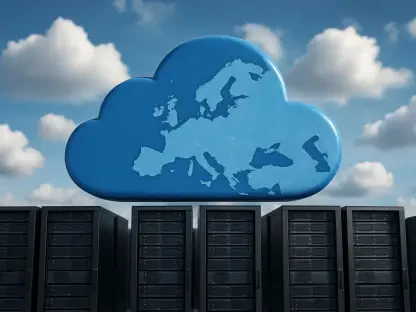Mainframe systems are the core of many organizations as they are often used for managing essential processes and information. These are systems that have been in existence for quite a long time, built on dated technology and support, but they remain very relevant in the execution of business activities.
The contemporary world is characterized by high levels of competition, dynamism, and globalization, which means that organizations must be flexible, easily expandable, and productive. The cloud migration of legacy systems is a great chance to transform the business with new possibilities, save money, and increase productivity. But, the process is not without its hitches. Some of the challenges that firms might encounter include compatibility problems, data transfer difficulties, and resistance from within the business. Nevertheless, the advantages of cloud migration, like security, scalability, and cost-effectiveness, stand as key factors that make cloud migration an ideal solution for competitive business environments.
Characteristics of Legacy Systems
Legacy systems are developed on technologies that were once considered as the best for developing an organization’s IT system many years ago. Such systems could well be based on outdated mainframes or early-generation servers and could involve languages and frameworks no longer widely used or supported by vendors. Therefore, it may be difficult to find parts to fix these systems, updates to install, or even expert personnel to attend to these intricate systems.
High Maintenance Costs
The systems are often very old, and because they are complex to operate, they can be expensive to maintain. These systems need to continue to operate, and to do so, they require regular maintenance, including patching old software, replacing worn hardware, and addressing chronic breakdowns. These costs are continuous and can put pressure on the IT budgets while pulling the resources away from more important projects.
Low Scalability and Flexibility
Low scalability and flexibility are two other major disadvantages of implementing a traditional ERP system. For instance, legacy systems were developed in the past with different requirements and were not created for the present and the future. Many of them are not designed to support the current workload requirements, and it becomes challenging to scale up or modify them for new business growth. However, their architecture is very rigid, and this makes the integration with new technologies or changes very slow, which hinders the innovation and flexibility of the organization to adapt to market forces.
Common Types of Legacy Systems
The following are some of the most common types of legacy systems:
Mainframe Systems
Mainframes are large centralized computers that have been used for many years to handle large volumes of data and business applications, especially in finance, insurance, and administrative sectors. While mainframes are powerful and dependable machines, they are also costly to own and maintain, and they tend to run applications written in archaic languages such as COBOL that can be challenging to port and update.
Client-Server Applications
In a client-server system, a computer helps clients by providing them with resources and services. This architecture was widely used at the end of the twentieth century and is still used today in various companies. However, these systems can be seriously difficult to scale because the addition of new clients or the processing of larger loads is a difficult task that requires the acquisition of new hardware and software. Also, client-server applications are not easily portable to modern architectures, such as the cloud.
Benefits of Migrating Legacy Systems to the Cloud
Cost Efficiency
This is one of the most persuasive arguments for moving legacy systems to the cloud: it usually implies much lower infrastructure costs. Having dedicated servers and hardware in-house can be expensive, as it entails fixed capital investment and recurring payments for upkeep. When organizations adopt the cloud, they no longer need to invest in actual servers and storage media together with the power expenses. The infrastructure is shared by cloud providers who handle it, which relieves the company of expensive investments in equipment.
On-Demand Resource Allocation
The cloud is unique in that it can be scaled to the level that is required, meaning that resources can be assigned only when necessary. These may include the need to add more storage, processing capabilities, or bandwidth, and in this regard, cloud platforms are well suited to provide these solutions expeditiously. It is especially helpful for companies that have unpredictable demand or have concerns regarding their workloads, as well as the companies that are growing very fast.
Ability to Scale Applications Easily
Most legacy systems are extremely large and have to be scaled up with large hardware investments and configuration changes. On the other hand, cloud platforms are intended to be scalable, and this is not an area where they are likely to fail. Horizontal scaling is the process of adding more instances of the application while vertical scaling is the process of increasing the capacity of the current instances. This means that businesses can adapt to new customer needs without long periods of time between product delivery or service provision, which maintains performance and user satisfaction rates.
Advanced Security Features Offered by Cloud Providers
Cloud providers have always made their clients aware of their security standards by implementing some of the best measures to protect their clients’ data. Protection is integrated with cloud services through encryption, identity and access management, and network security to provide a solid platform. Cloud providers also offer tools and services to assist business organizations in addressing security threats effectively.
Faster Performance with Modern Cloud Infrastructure
The current cloud infrastructure is the most optimal for delivering high performance with the help of modern technologies and approaches. This results in higher levels of productivity, faster response times, and better performance of the application. For businesses, this means increased customer satisfaction and efficiency in the organization. The ability to adapt to new technologies and innovations also helps businesses to stay relevant in the constantly evolving digital landscape.
Challenges of Migrating Legacy Systems
Legacy applications may not be compatible with modern cloud environments, which means they have to be reworked or re-designed to run properly in the cloud. This can range from refactoring old code to interacting with new cloud-based services and handling architectural disparities.
Data transfer
Moving large amounts of data across different systems while maintaining data integrity and consistency is a concern because data can get lost or corrupted, which may prove time-consuming and costly. Moreover, some applications may require re-designing for cloud computing, which can be a time-consuming process and may take a lot of development work, hence increasing the overall cost and time of migration.
Financial Challenges
The initial cost of migration can be high, encompassing expenses for planning, development, and training. While long-term savings are a significant benefit of cloud migration, the upfront investment can be a barrier for some businesses. Additionally, budgeting for ongoing cloud costs is crucial to avoid unexpected expenses. Cloud services operate on a subscription model, and businesses must have a clear understanding of their usage patterns and associated costs to manage their budgets effectively.
Regulatory Challenges
It is always a daunting task to adhere to the guidelines of data privacy laws due to the fact that it is complex to operate under different jurisdictions in different countries. Due to this, it is important to select the cloud providers that will conform to the compliance standards and laws. Data residency and sovereignty are very complex and should be handled with utmost care and concern. Legal requirements and regulations are often a consideration for where and how data is stored and processed in businesses, which affects cloud provider selection and configuration.
Best Practices for Legacy System Migration
Before starting the migration process, it is imperative to migrate and preserve applications and code that are no longer needed. Automation tools play an important role in analyzing the code and identifying dependencies that must be altered to suit the cloud architecture. Static code analyzers, dependency mappers, and application profiling tools are helpful as they provide a business with a stable ground for deciding on the approach to migration.
Implementing Robust Security Measures
One of the main concerns when moving to the cloud is the security of data stored in legacy systems. Preventative measures should be taken right from the beginning to ensure that digital assets and applications are secure. This involves securing data by encrypting it in storage and data in motion, IAM controls, and network security controls such as firewalls and VPNs.
Some security tools and services that cloud providers offer to their business clients include enhanced threat identification, security surveillance, and self-executing counteractions to security breaches. When implemented in the migration plan, the tools help organizations maintain the security of their applications and data during the migration and in the future.
Compliance Audit and Monitoring Plan
Another important consideration in cloud migration is compliance with industry regulations and standards. Pre- and post-migration compliance assessments and monitoring assist in preventing noncompliance with legal and regulatory rules in migrated systems. This entails periodic surveillance of the security controls, data protection policies, and access records for any signs of compliance breaches to be dealt with as soon as possible.
Conclusion
Cloud migration of legacy systems is a process that can be very beneficial for businesses, in terms of cost reduction, flexibility, security, and performance. However, it’s not easy; it needs planning, proper implementation, understanding of the problems, and a robust way of implementing the solutions.
This way, businesses can manage the migration process in stages, thus minimizing risks and maintaining business continuity. Automation tools assist in simplifying the migration process and guaranteeing the efficiency and quality of the results. The implementation of strong security measures and constant compliance checks safeguards important data and complies with the rules.
When it comes to migrating, having the right plan, the right tools, and focusing on security and compliance issues, a business can easily overcome the challenges of such migration. In this way, the cloud becomes a way to modernization that can bring quite a lot of positive changes to operations and bolster success in the future.









